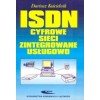- Out-of-Stock



No product available!
PCB board and programmed system for a large XXL thermometer, measuring the temperature in the range from -55 ... + 125 ° C. AVT1790A +
No product available!
No product available!
No product available!
high-current XT60 connectors commonly used in the RC hobby industry. They are sold as matching male-female pairs and are great for projects that involve bigger motors and controllers, such as our high-power motor drivers and Simple Motor Controllers. Pololu 2174
No product available!
Lead-free tin Sn99Cu0.7Ag0.3 with EVO11 flux, 250 g spool, 0.50 mm diameter. Cynel SAC307-0.50/250
No product available!
Thermal imaging camera with a 2.4" LCD display. It measures the temperature in the range from -10 to 400°C. Uni-T UTi80P
No product available!
No product available!
No product available!
The SparkFun ESP32 Thing Power Control Shield enables the ESP32 Thing to switch up to 5A of a DC load, providing a wide variety of options to control your next project! With a default voltage range of 5–28VDC, power can be connected to this shield in one of two ways. DEV-14155
No product available!
No product available!
No product available!
No product available!
No product available!
Kit with heatsink and assembly elements for the NanoPC T4 minicomputer. FriendlyELEC NanoPC T4 Heat SInk
No product available!
No product available!

